Medina has come a long way since I first played it back in the early 1990s. They removed hundreds of trees, giving the course a clean, pastoral look as you peer across the countryside. For many clubs this would be enough, but in 2027, Dave Zinkand will change the routing, add new bunkers, and tweak several holes. It will essentially become a new golf course.

Medina was designed in 1967 by Jack Kidwell. In order to put 27 holes on the property, he routed only straight holes. On the championship course he used the seldom used combination of five par threes, five par fives, and eight par fours. The par threes have always been the lynchpin, and it’s no coincidence that they are the best holes on the course. The property has good movement with several tee shots hit over the crest of hills. The greens have a variety of shapes and sizes, however, they are all crowned on their sides. Most slope back to front, but a couple feed to the rear, and three of them are two tiered. The course is a lot of fun and yields good scores.
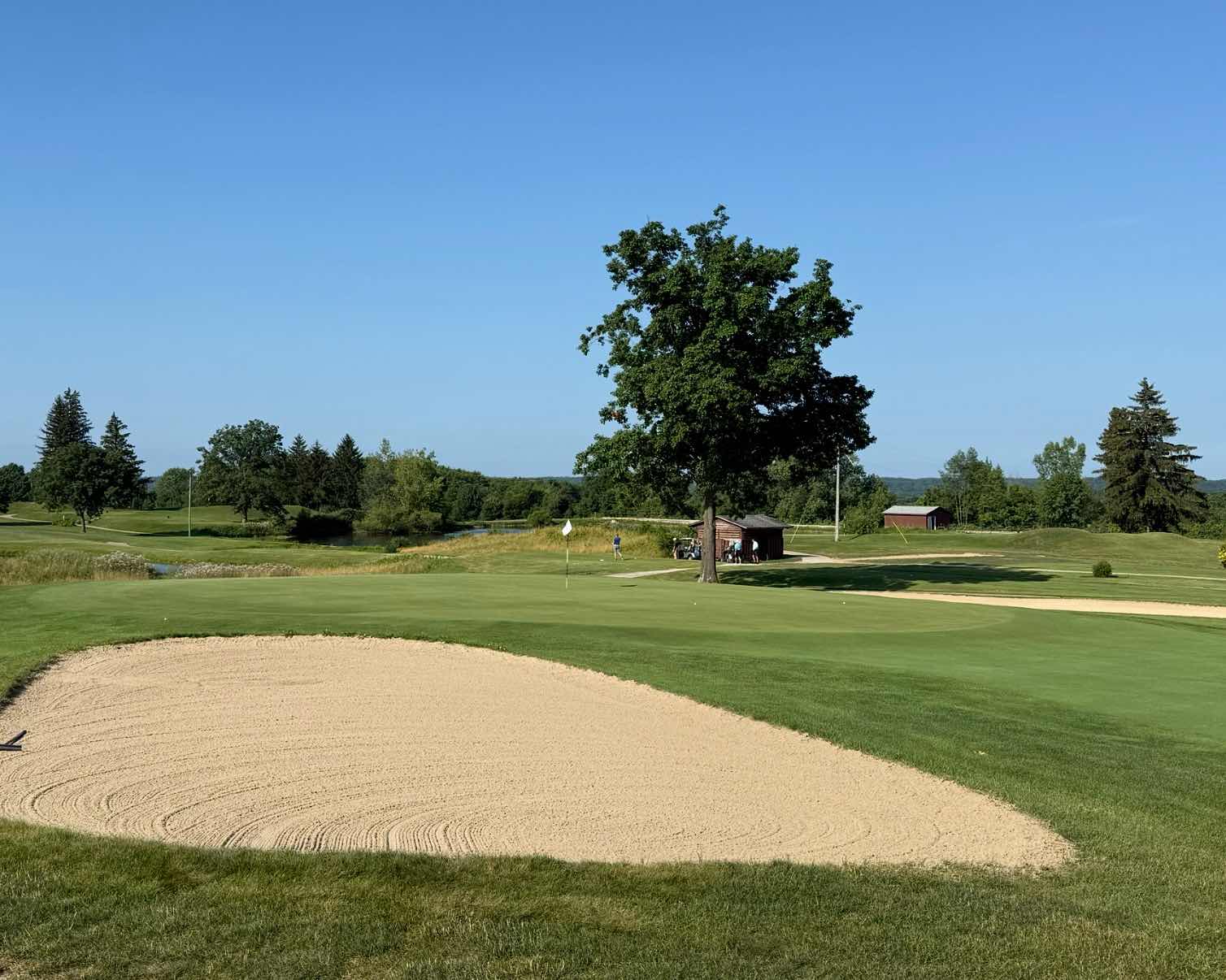
(The 405/375 yard par five opening hole plays shorter than its listed yardage as drives bound down the hill into a shallow valley. A small portion of the green slopes forward with most of it going to the back right corner. Tough green to read. Avoid three putting; be happy with a par.)

(The 220/185 yard par three third is a great hole! The creek on the left angles in, catching any pull or draw that fails to stop. It even snarls balls hit too strong. This brings the tree on the right even more into play. Par is a very good score.)

(The 200/180 yard par three fifth is hit from an elevated tee box to a perched green. The two tiered green requires an accurate club selection otherwise one might find himself with a very daunting putt.)

(The 175/155 yard par three fourteenth is downhill to a forward pitched green. Together with the eleventh, both one shotters on the back nine are good birdie opportunities.)
The third nine, called Lilac, is opening this summer and will be Ohio’s first reversible course. It’ll be a par 31 with five par threes and four par fours. Dave Zinkand’s work is a preview of what will eventually happen with the big course. The bunkering is very noticeable and pops from the landscape. It’ll be challenging to escape from the steep faced, concaved traps. The heart of this section of property is the creek with is shale stone walls. There’ll be some exciting shots played over and alongside this hazard. For northeast Ohioans, this maybe the most anticipated new course in the past twenty years. (In my opinion, architecturally more interesting than Westfield’s North)
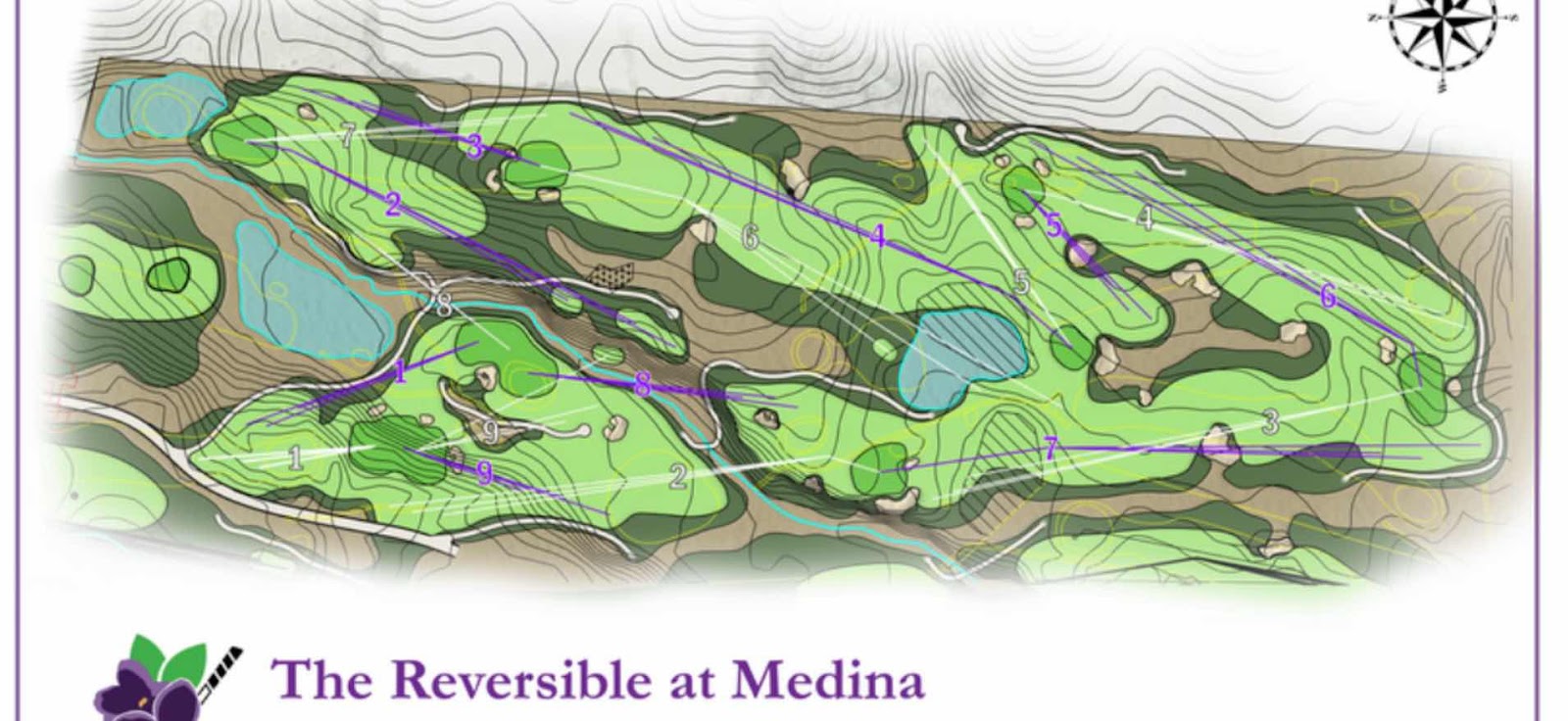
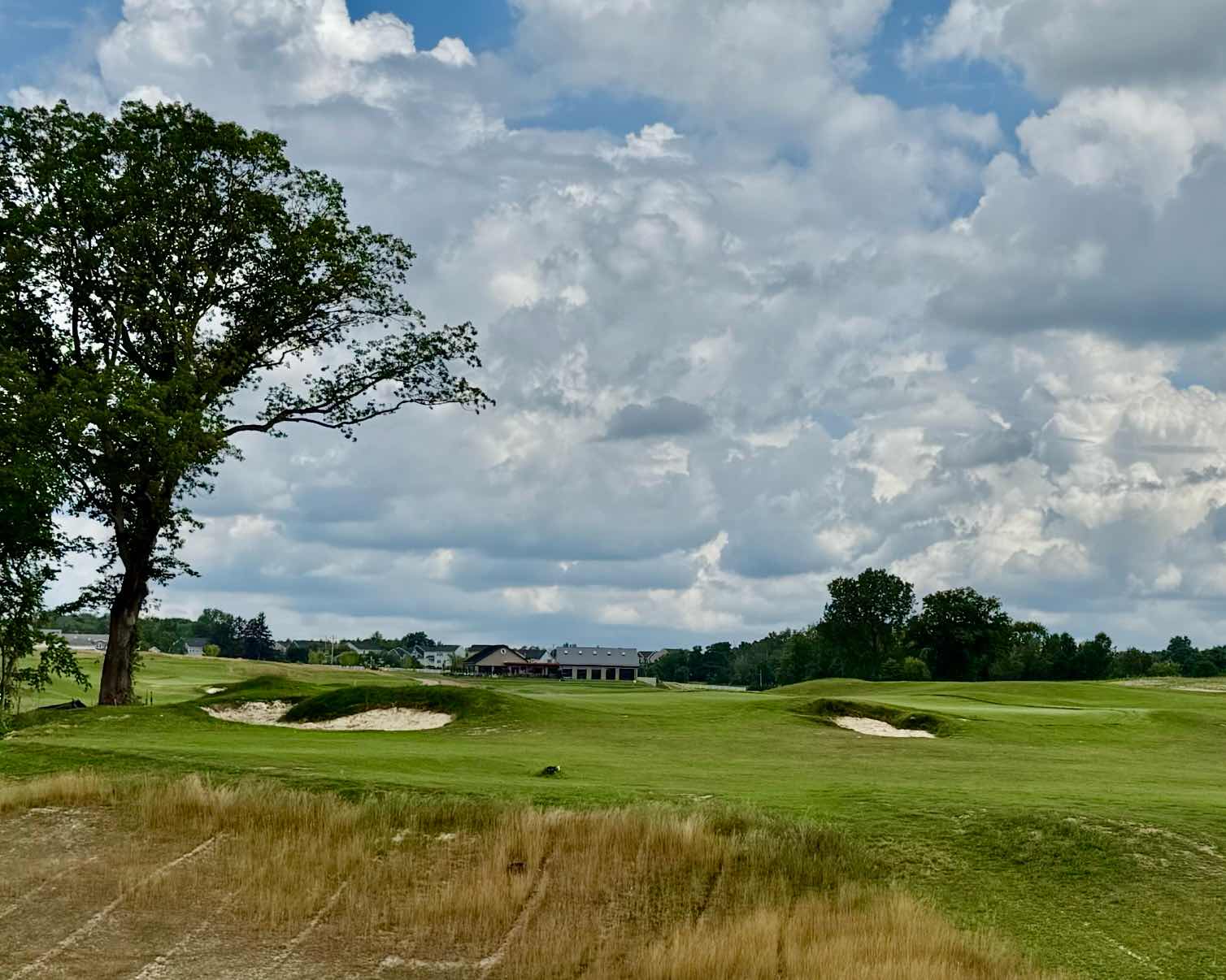
(#7 clockwise green view…
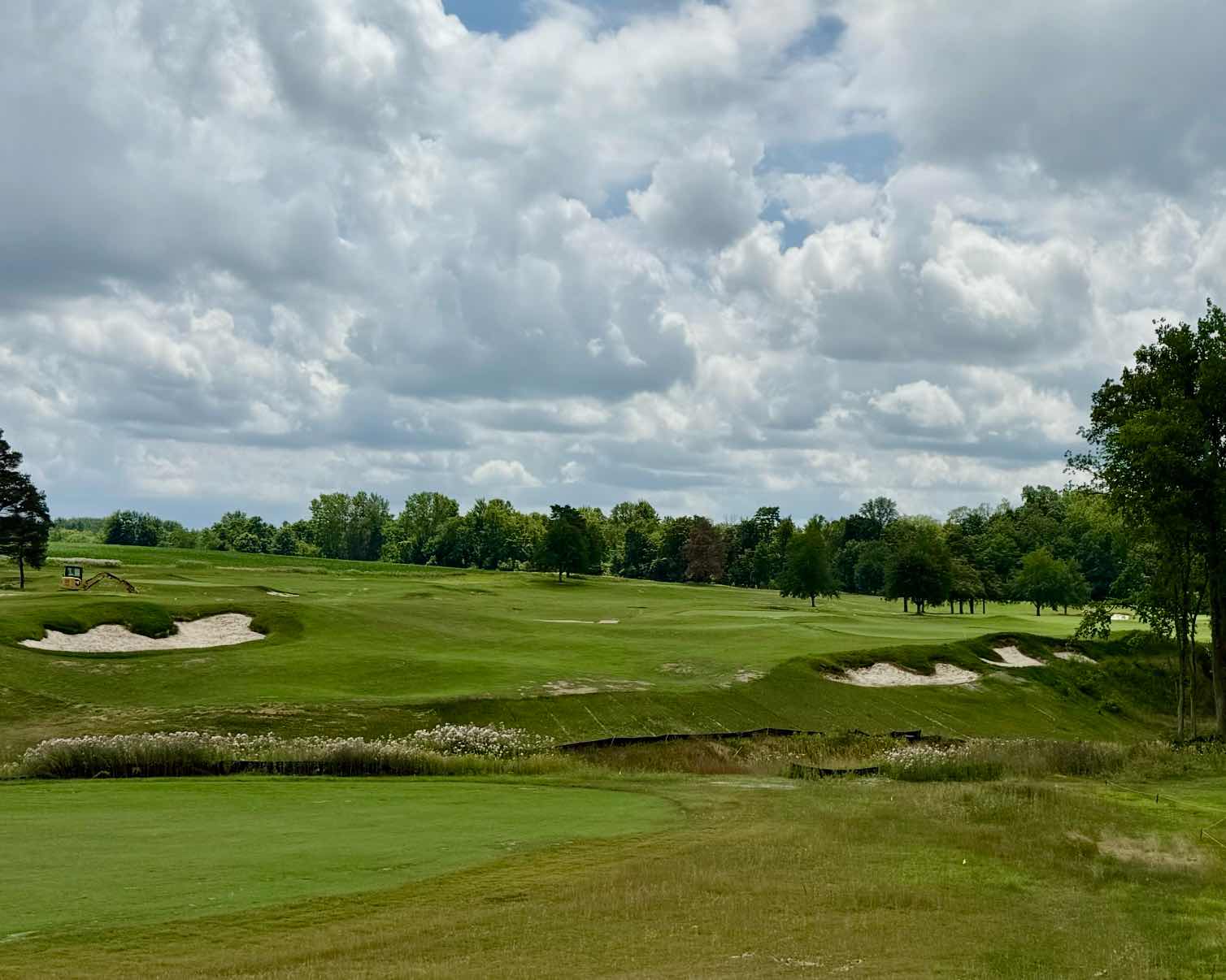
…and it playing as #2 counterclockwise.)

(The double green will be #1 and #8 clockwise while only being #8 counterclockwise.)
I’m thrilled Medina has taken a bold leap to expand in a way that puts Ohio in the national spotlight. Fingers crossed, maybe it’ll provoke someone else into building a new course nearby, especially since we lost so many recently. Even as it is now, Medina is the best course, minus Westfield’s South, in the far southern suburbs of Cleveland. In five years, I’ll be back to revisit Dave Zinkand’s changes. I give Medina a solid 5 (good)(worth driving an hour to play). As for the new nine, golf aficionados will be traveling from all over to play it. It might even make the best executive course list. (If there is one)

(Remember the adage “It’s not how good your good shots are but how bad your poor shots”. My mistakes were quickly punished while my good shots weren’t rewarded or I failed to take advantage of them. My range sessions have been getting better, and I definitely see improvement. My 87 was probably the worst I could have shot.)
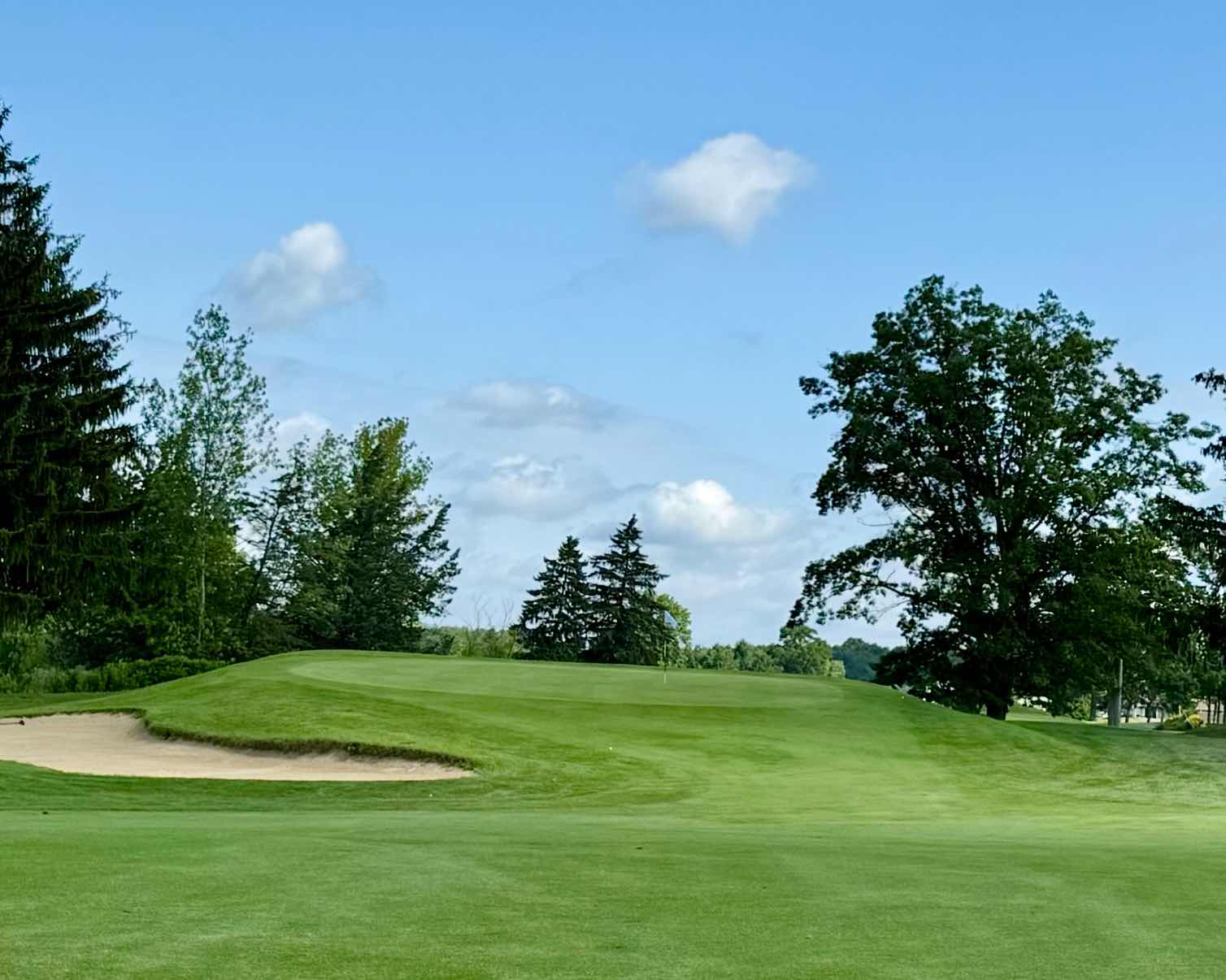
(The 580/495 yard par five seventh ends at this pushed up green. The pitch is steep so stay below the hole.)

(View from sixteen green)

(The 395/355 yard par four eighteenth used to be a quaint little hole played in the intimate setting of the clubhouse. It is quite surprising how different it looks with all the trees gone. Medina is one of the courses on the ICPGA schedule. It’s an excellent opportunity to play several area private clubs for a modest fee of $75.)